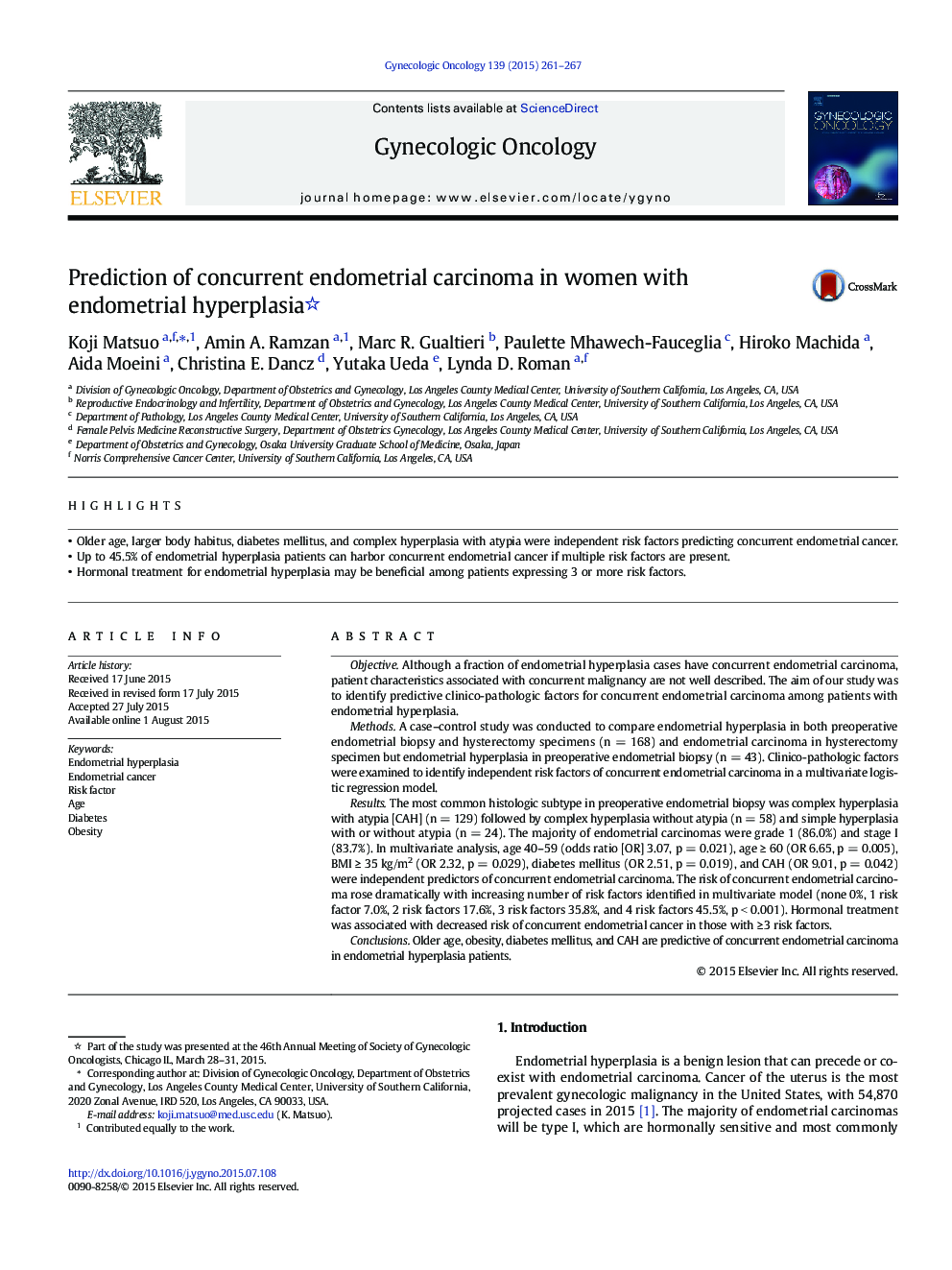| Article ID | Journal | Published Year | Pages | File Type |
|---|---|---|---|---|
| 3943055 | Gynecologic Oncology | 2015 | 7 Pages |
•Older age, larger body habitus, diabetes mellitus, and complex hyperplasia with atypia were independent risk factors predicting concurrent endometrial cancer.•Up to 45.5% of endometrial hyperplasia patients can harbor concurrent endometrial cancer if multiple risk factors are present.•Hormonal treatment for endometrial hyperplasia may be beneficial among patients expressing 3 or more risk factors.
ObjectiveAlthough a fraction of endometrial hyperplasia cases have concurrent endometrial carcinoma, patient characteristics associated with concurrent malignancy are not well described. The aim of our study was to identify predictive clinico-pathologic factors for concurrent endometrial carcinoma among patients with endometrial hyperplasia.MethodsA case–control study was conducted to compare endometrial hyperplasia in both preoperative endometrial biopsy and hysterectomy specimens (n = 168) and endometrial carcinoma in hysterectomy specimen but endometrial hyperplasia in preoperative endometrial biopsy (n = 43). Clinico-pathologic factors were examined to identify independent risk factors of concurrent endometrial carcinoma in a multivariate logistic regression model.ResultsThe most common histologic subtype in preoperative endometrial biopsy was complex hyperplasia with atypia [CAH] (n = 129) followed by complex hyperplasia without atypia (n = 58) and simple hyperplasia with or without atypia (n = 24). The majority of endometrial carcinomas were grade 1 (86.0%) and stage I (83.7%). In multivariate analysis, age 40–59 (odds ratio [OR] 3.07, p = 0.021), age ≥ 60 (OR 6.65, p = 0.005), BMI ≥ 35 kg/m2 (OR 2.32, p = 0.029), diabetes mellitus (OR 2.51, p = 0.019), and CAH (OR 9.01, p = 0.042) were independent predictors of concurrent endometrial carcinoma. The risk of concurrent endometrial carcinoma rose dramatically with increasing number of risk factors identified in multivariate model (none 0%, 1 risk factor 7.0%, 2 risk factors 17.6%, 3 risk factors 35.8%, and 4 risk factors 45.5%, p < 0.001). Hormonal treatment was associated with decreased risk of concurrent endometrial cancer in those with ≥ 3 risk factors.ConclusionsOlder age, obesity, diabetes mellitus, and CAH are predictive of concurrent endometrial carcinoma in endometrial hyperplasia patients.
